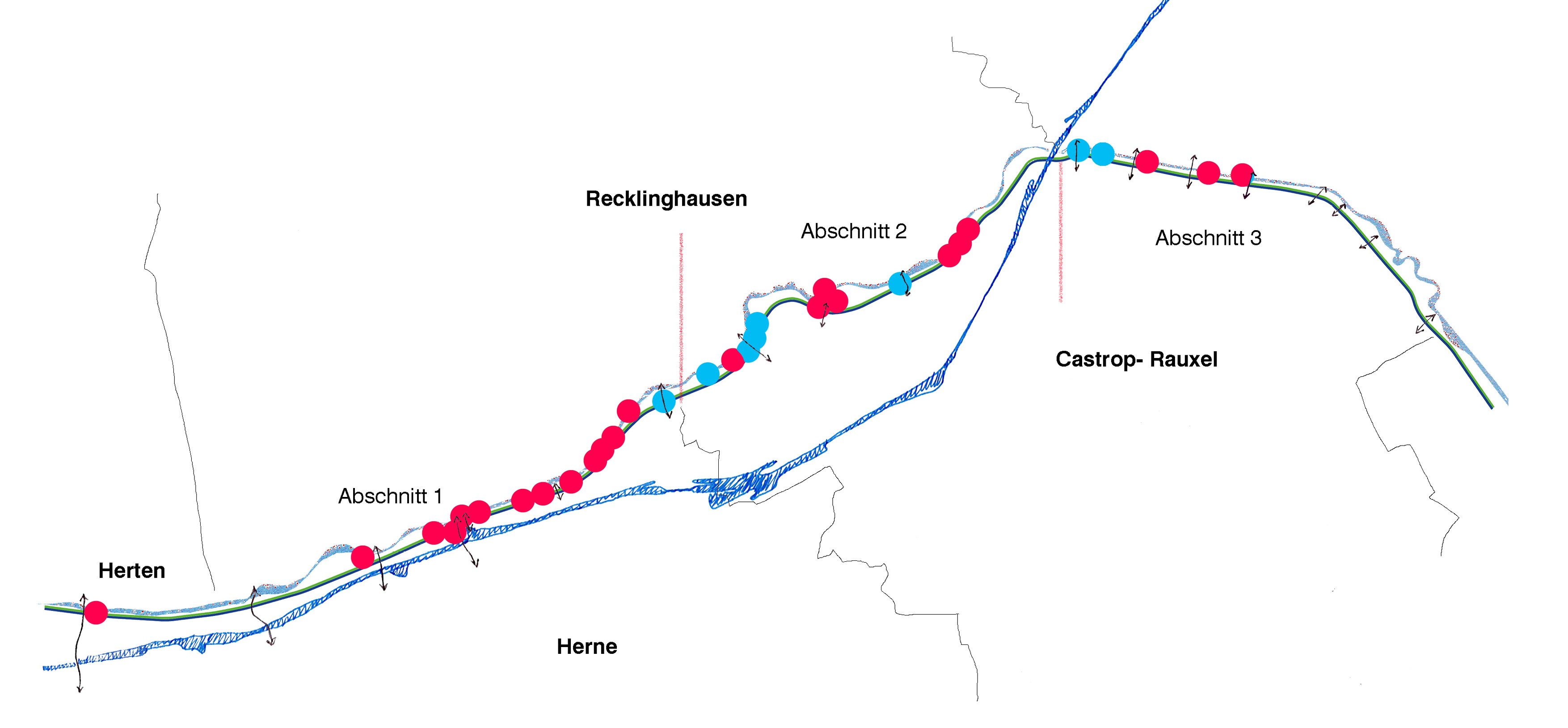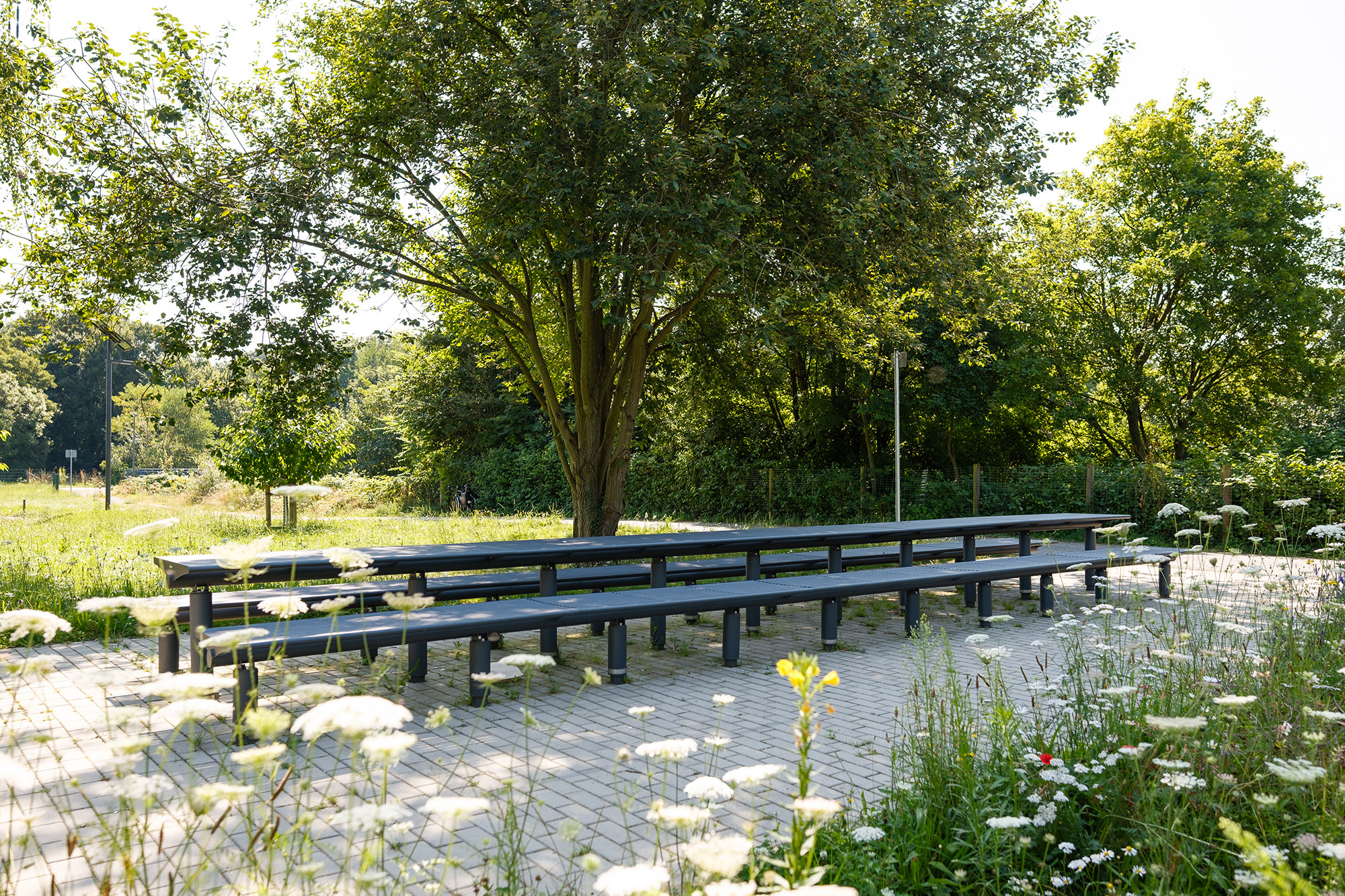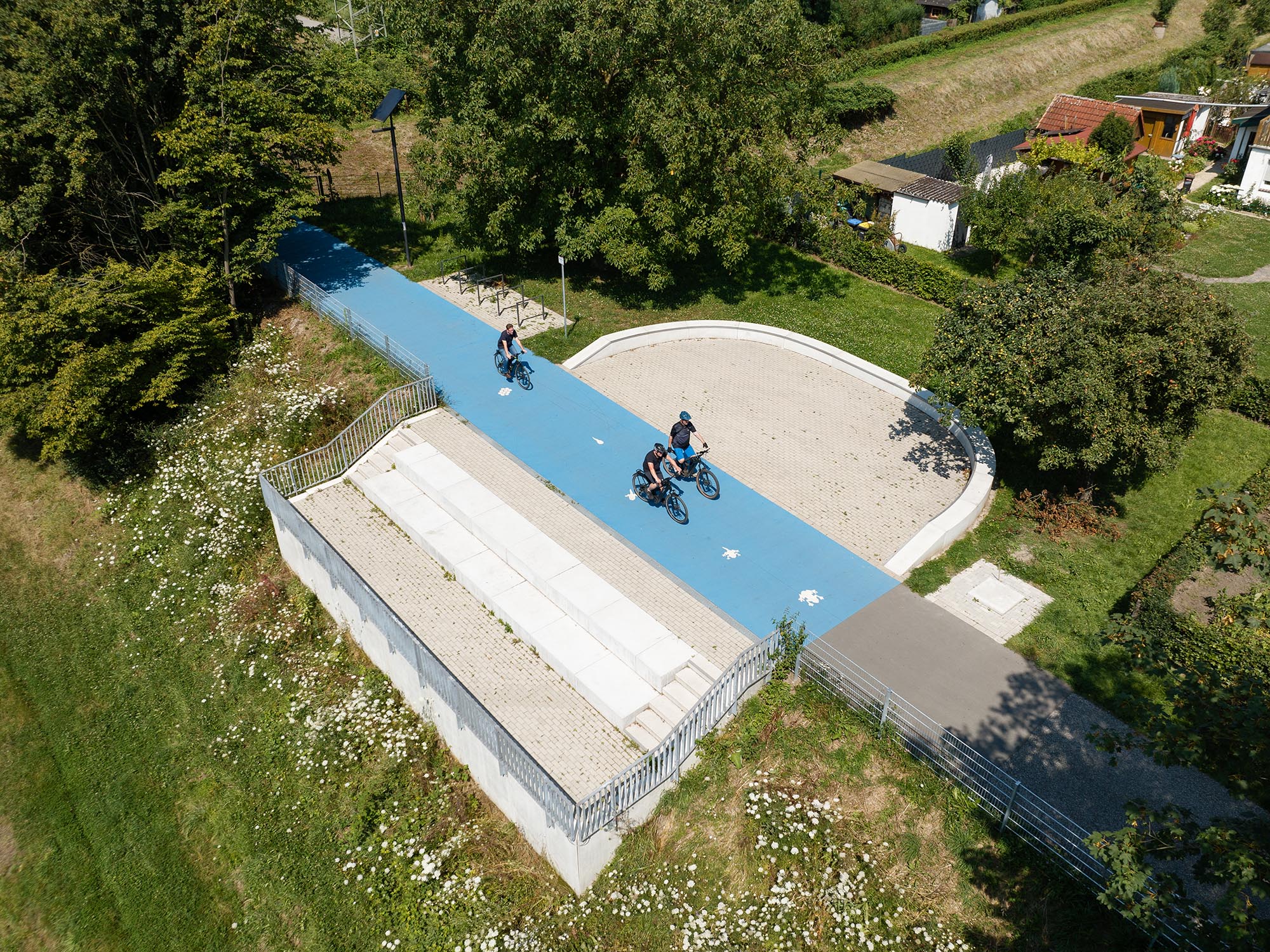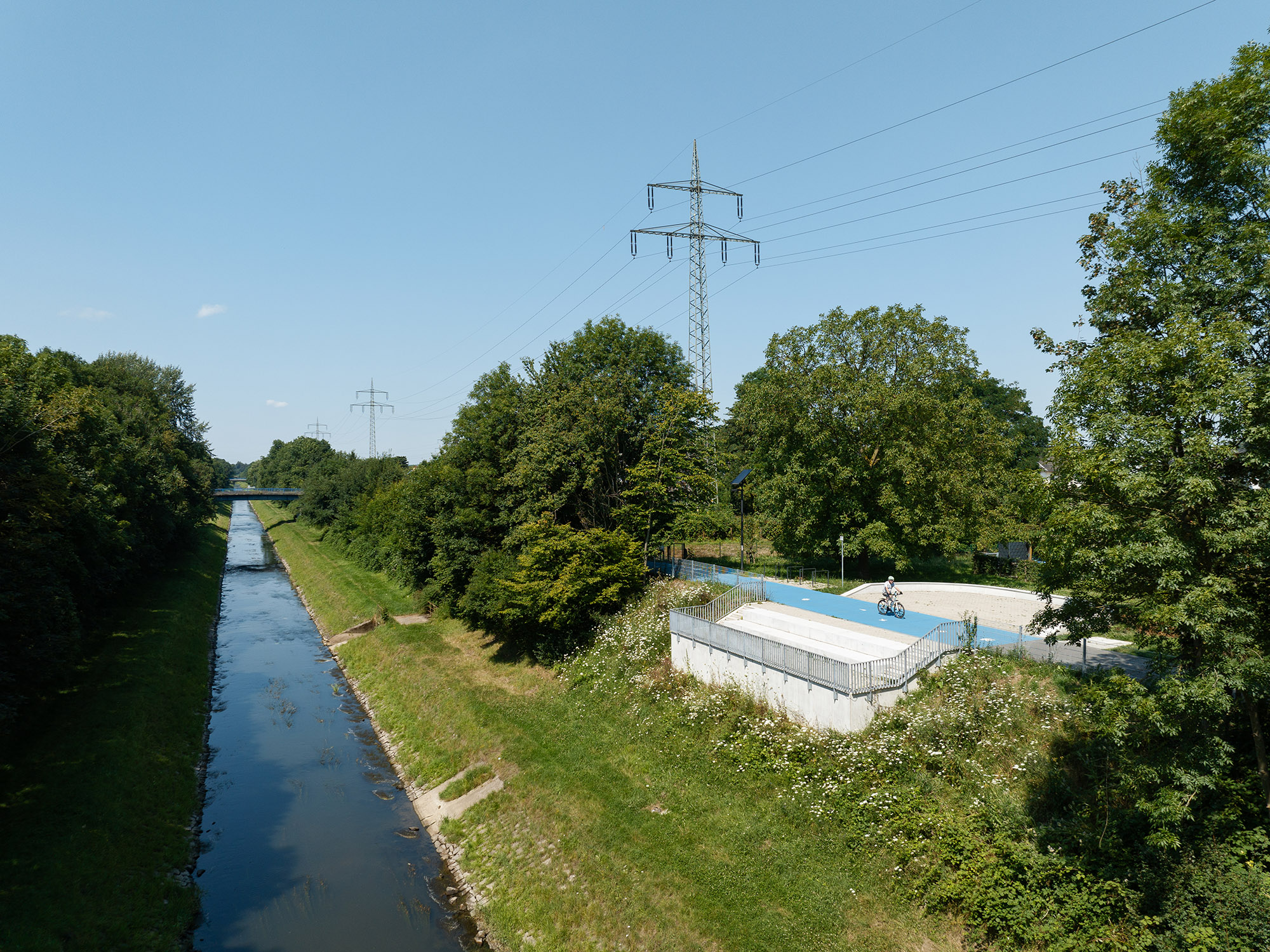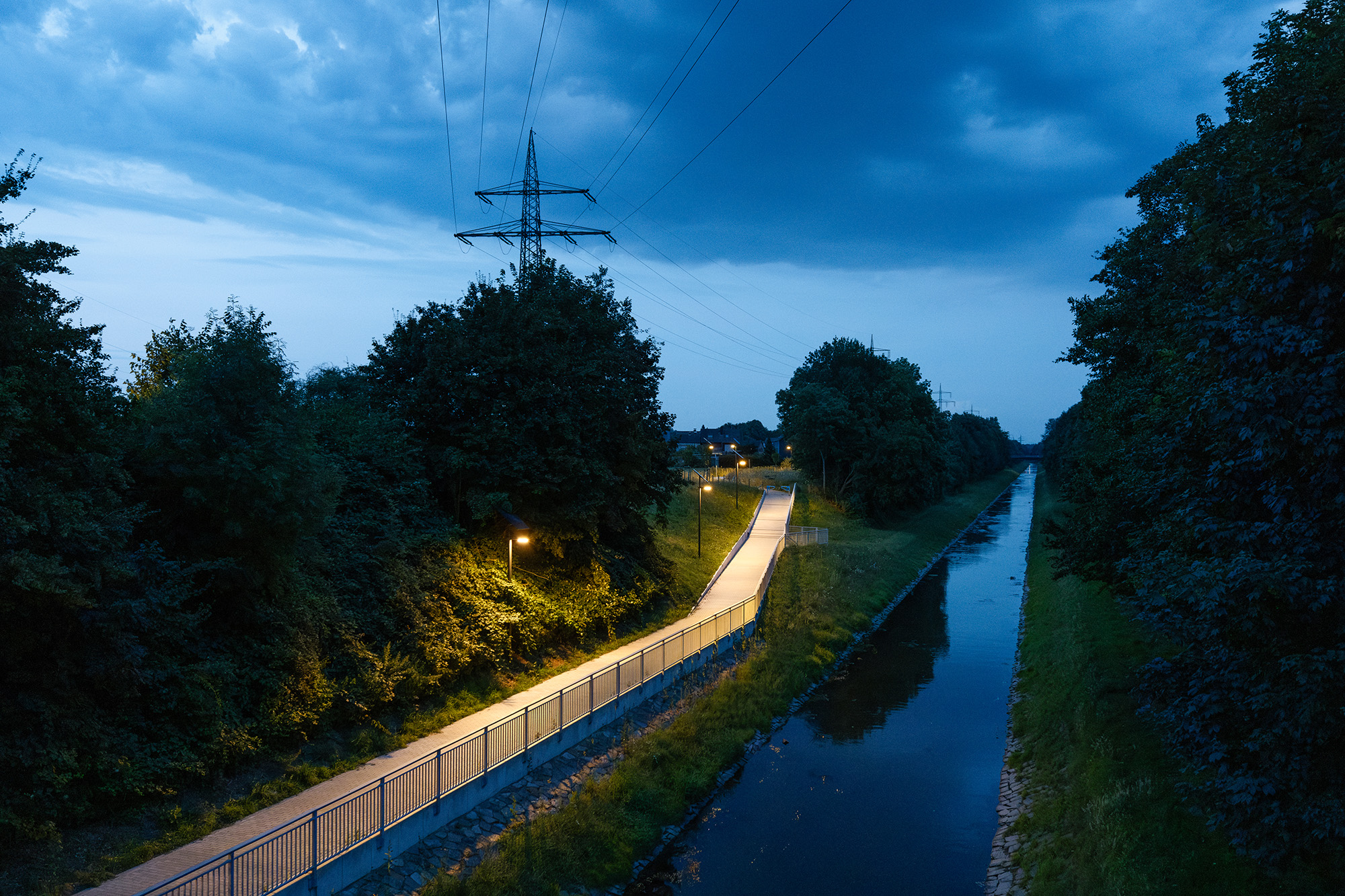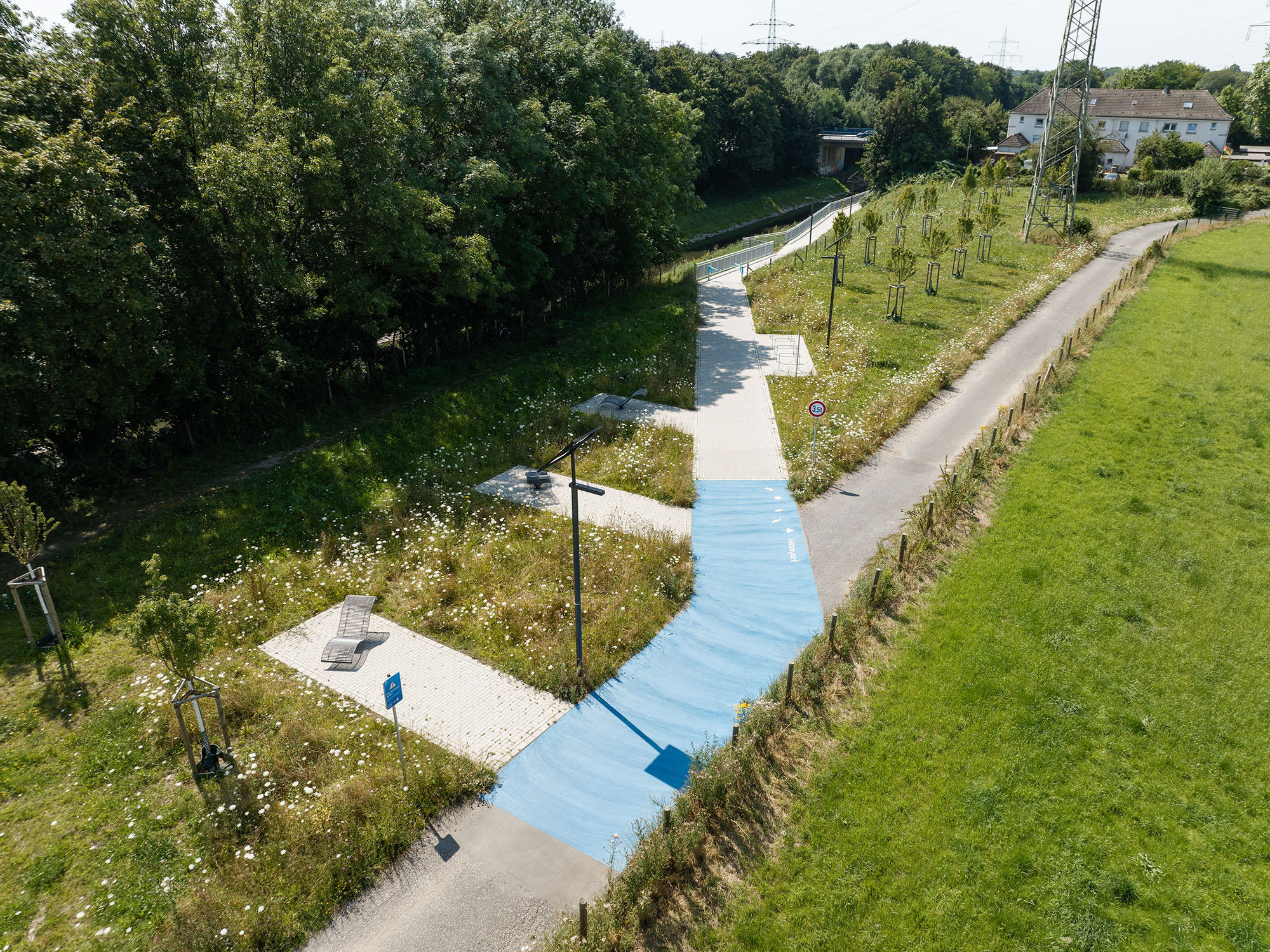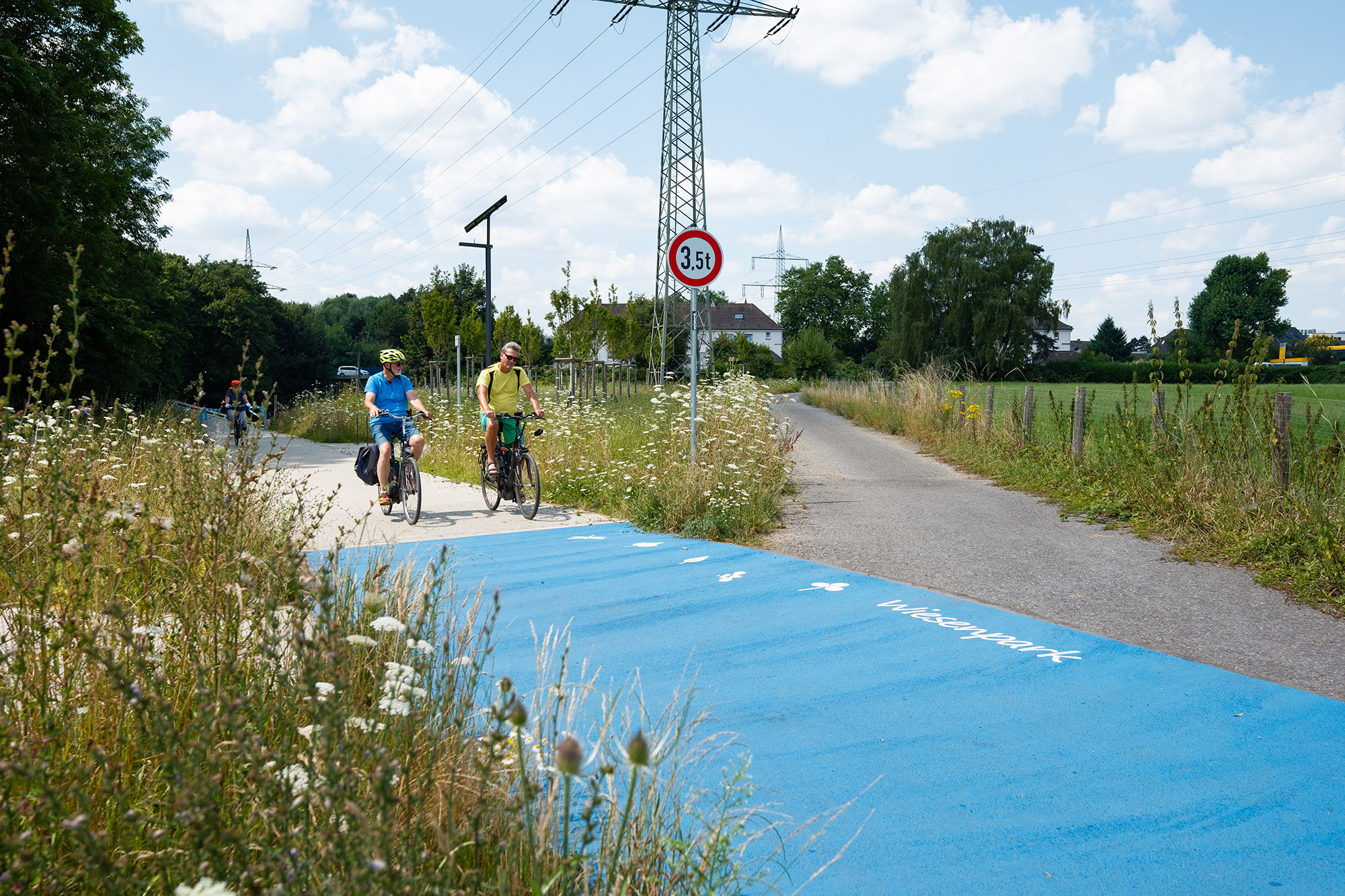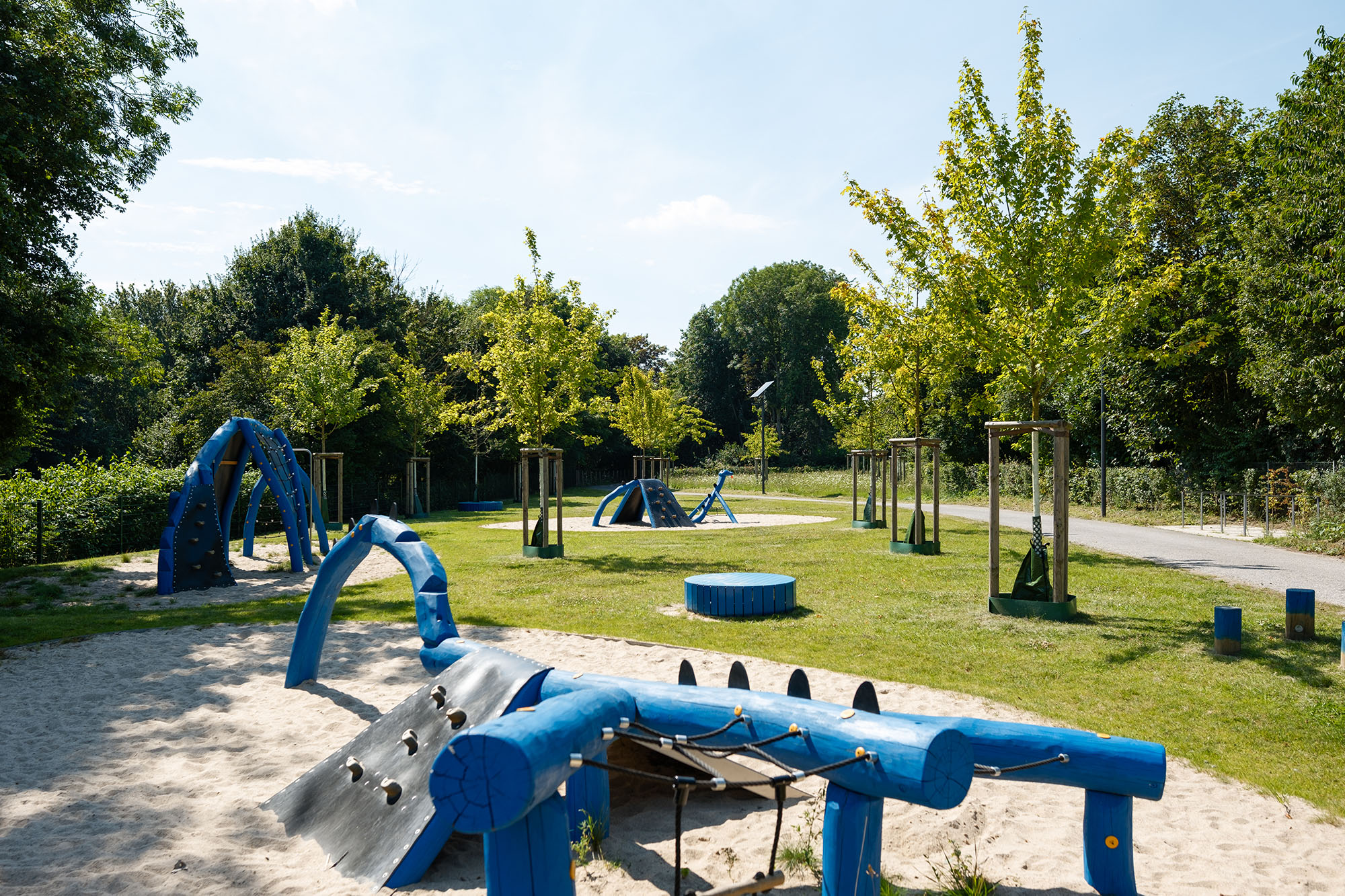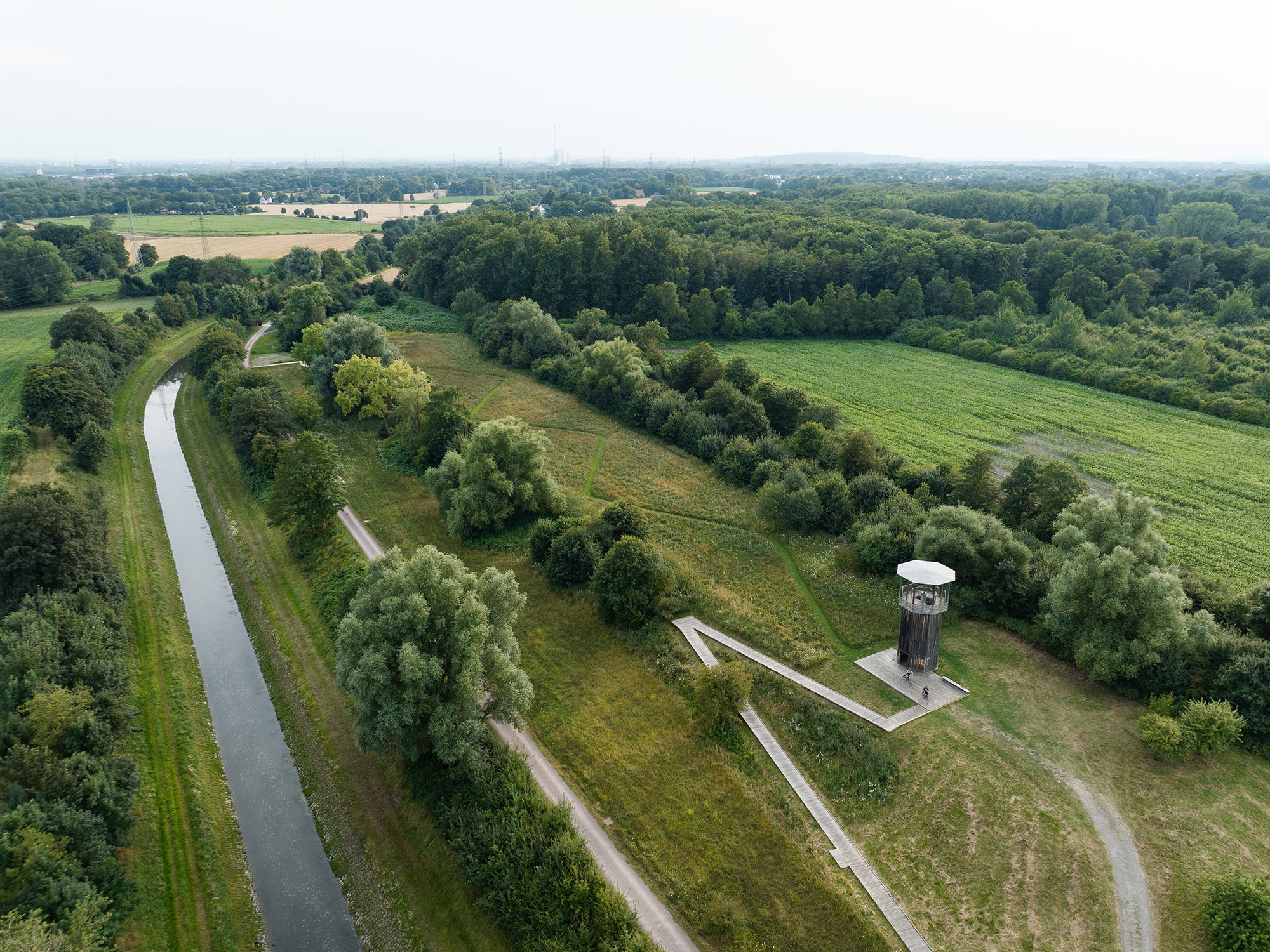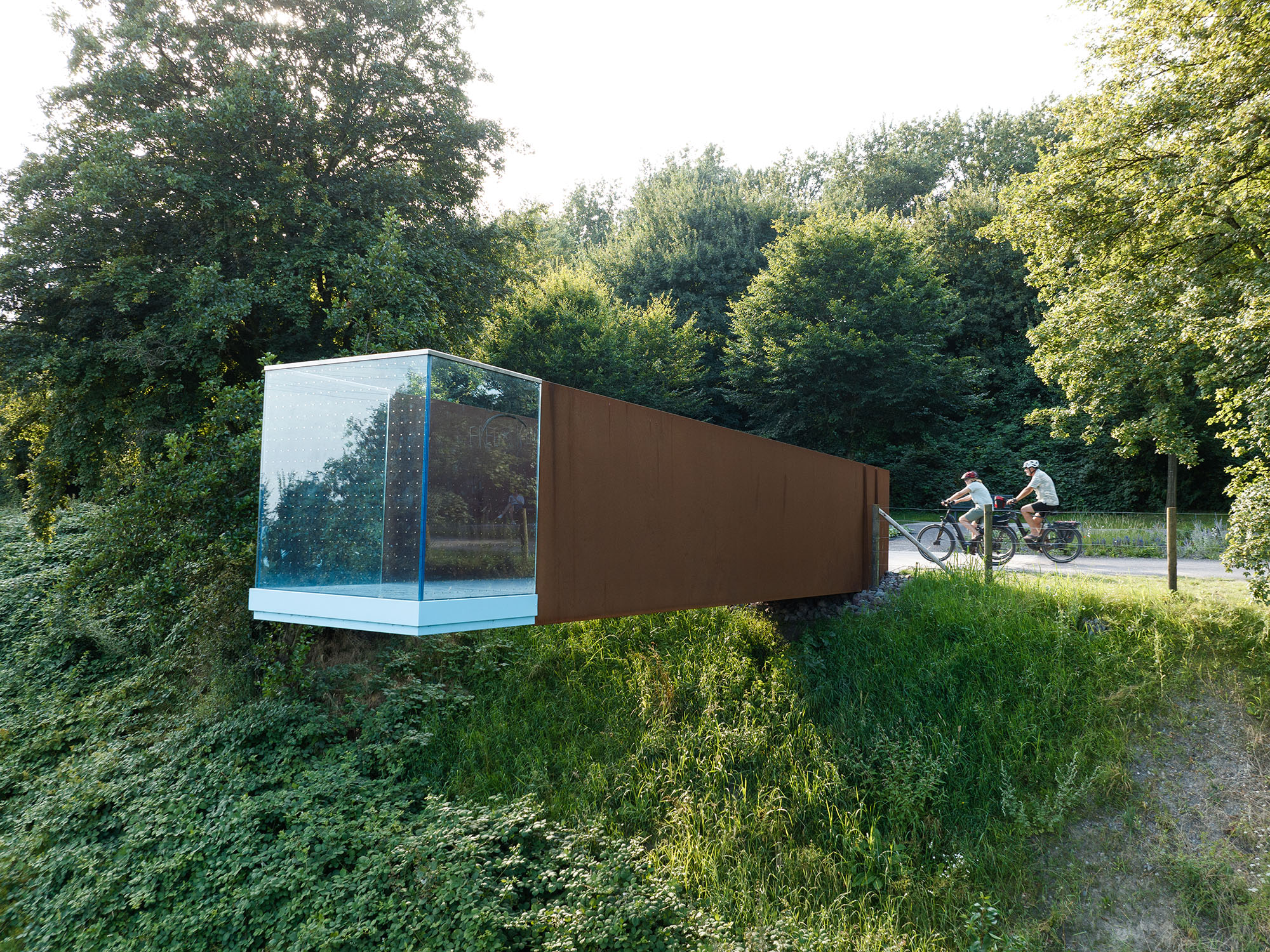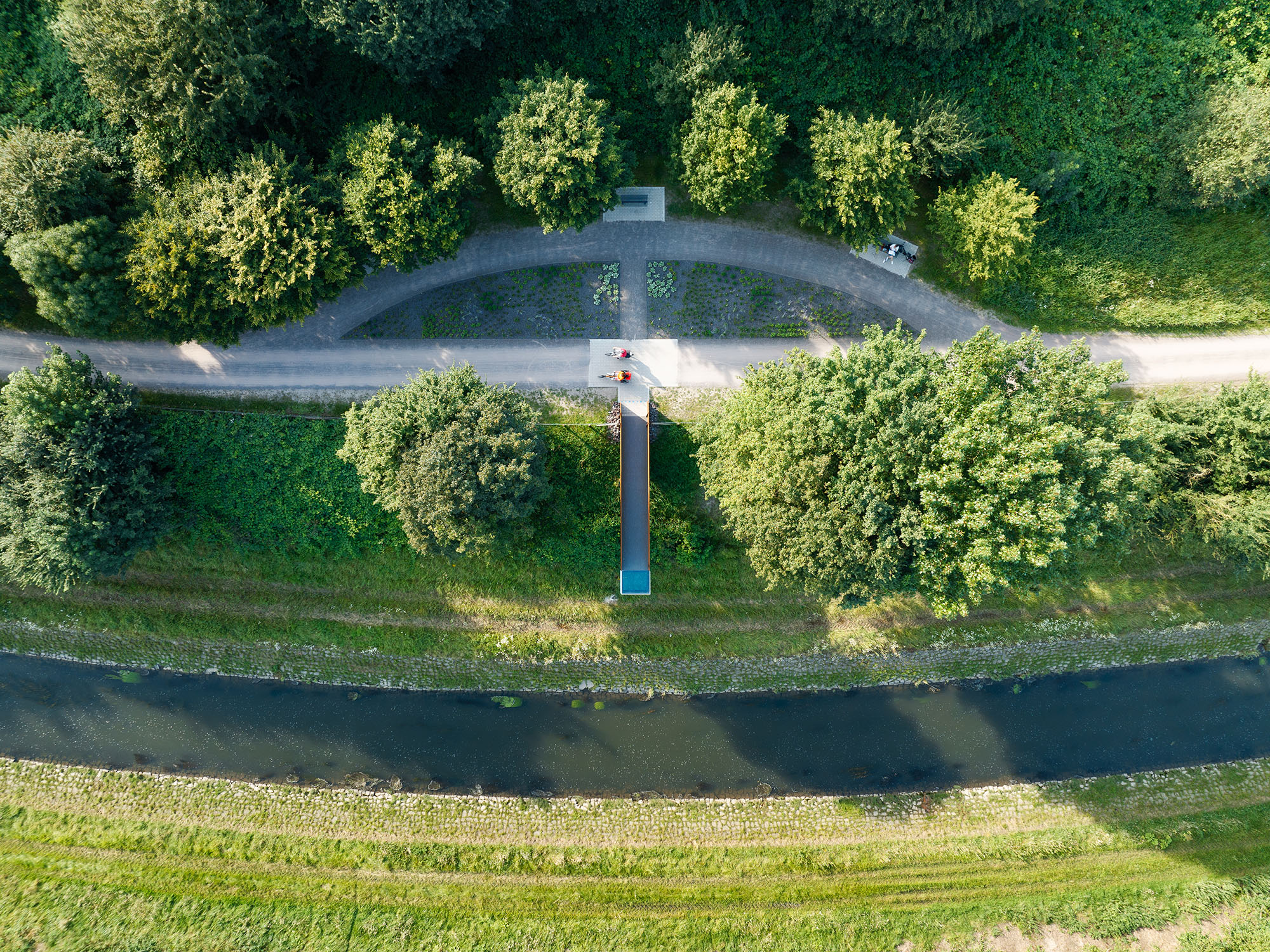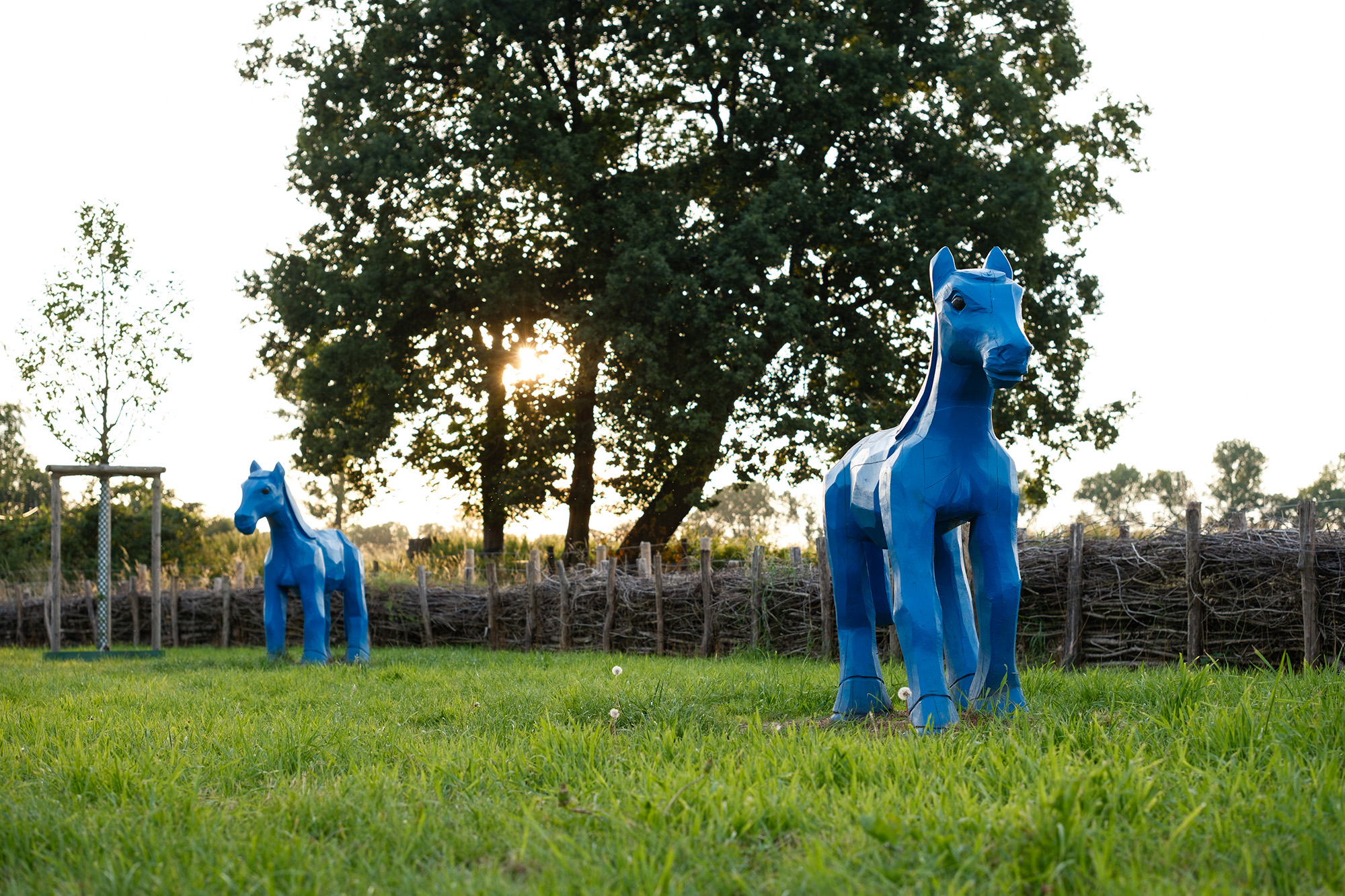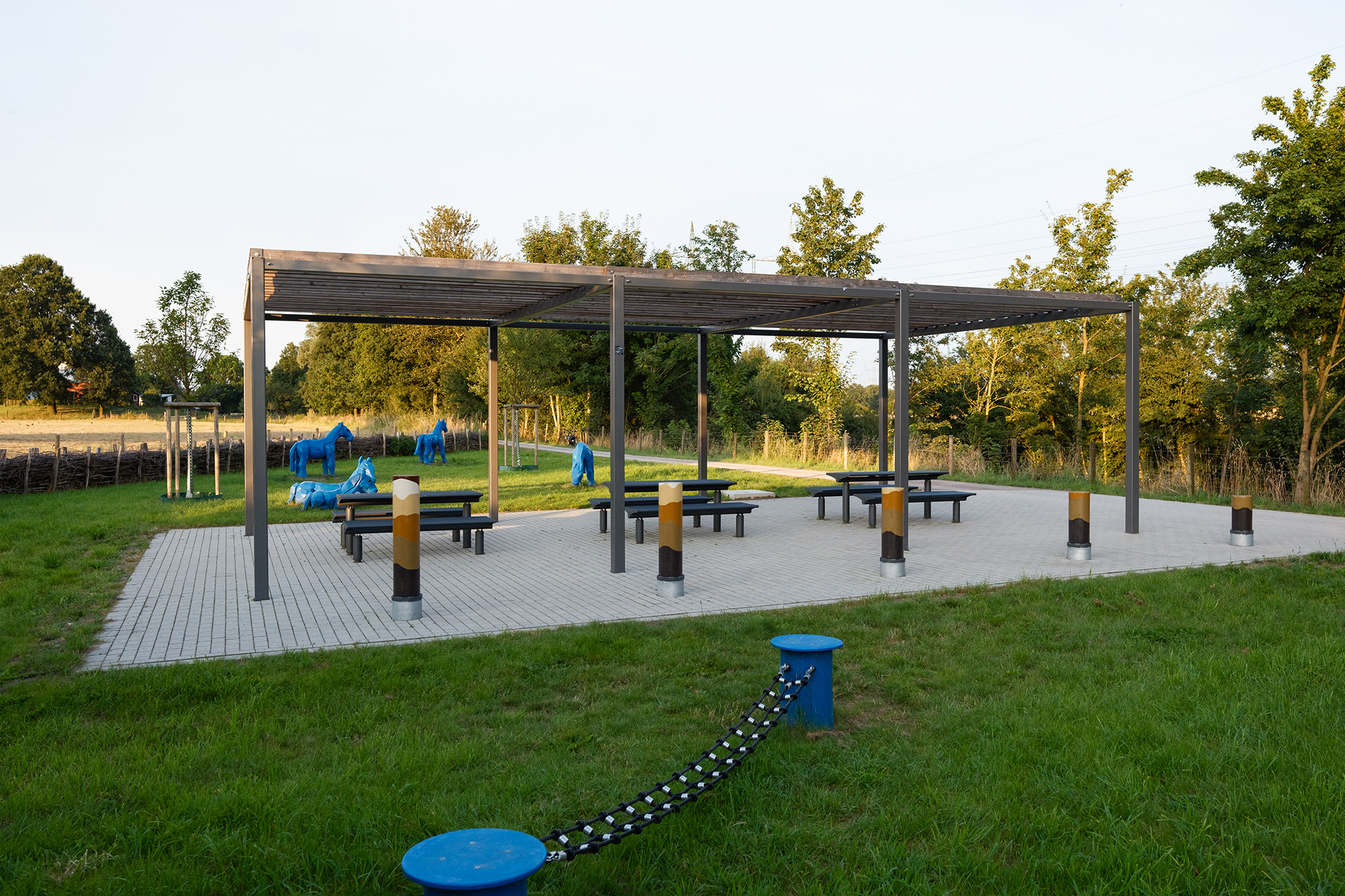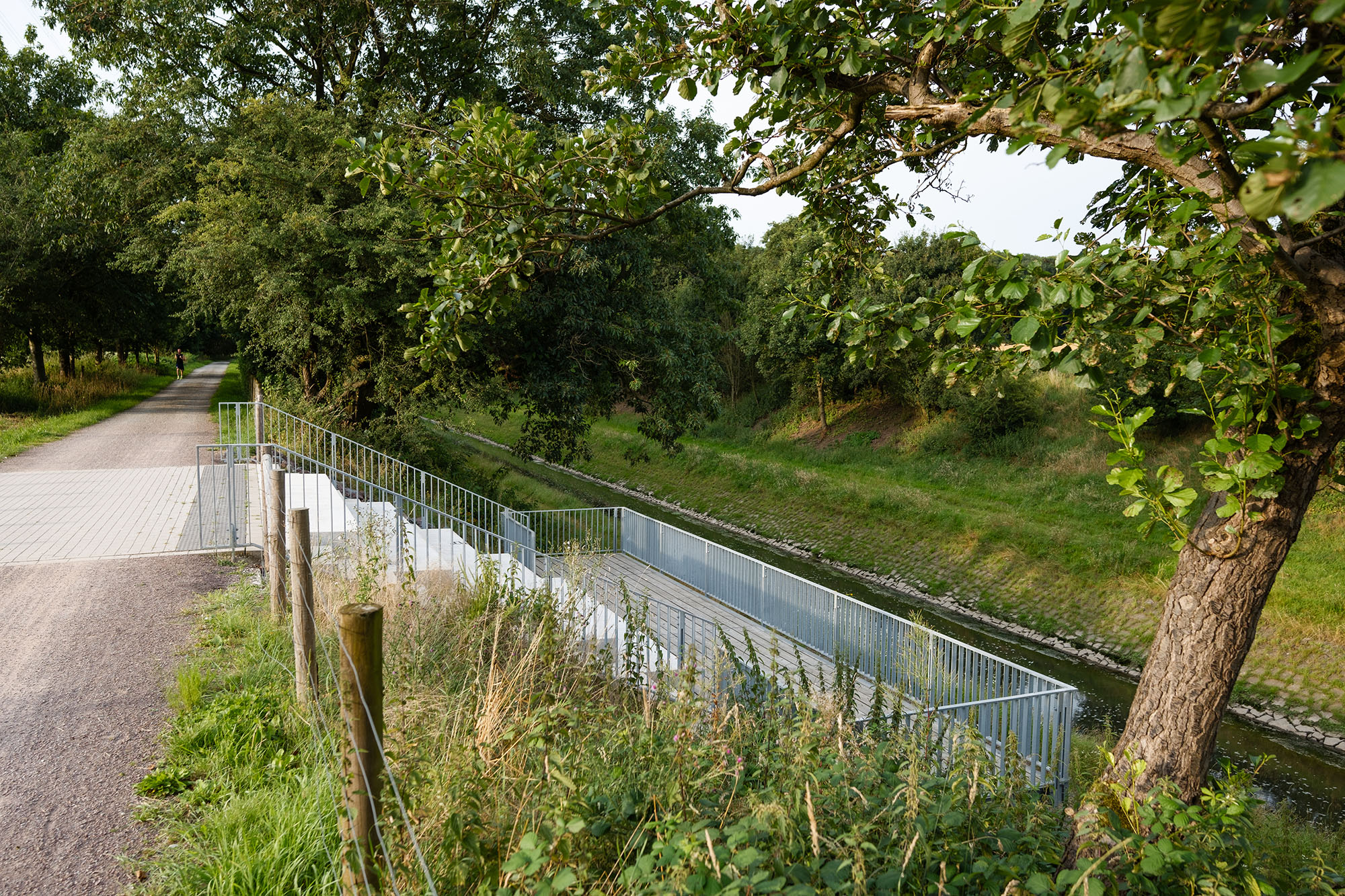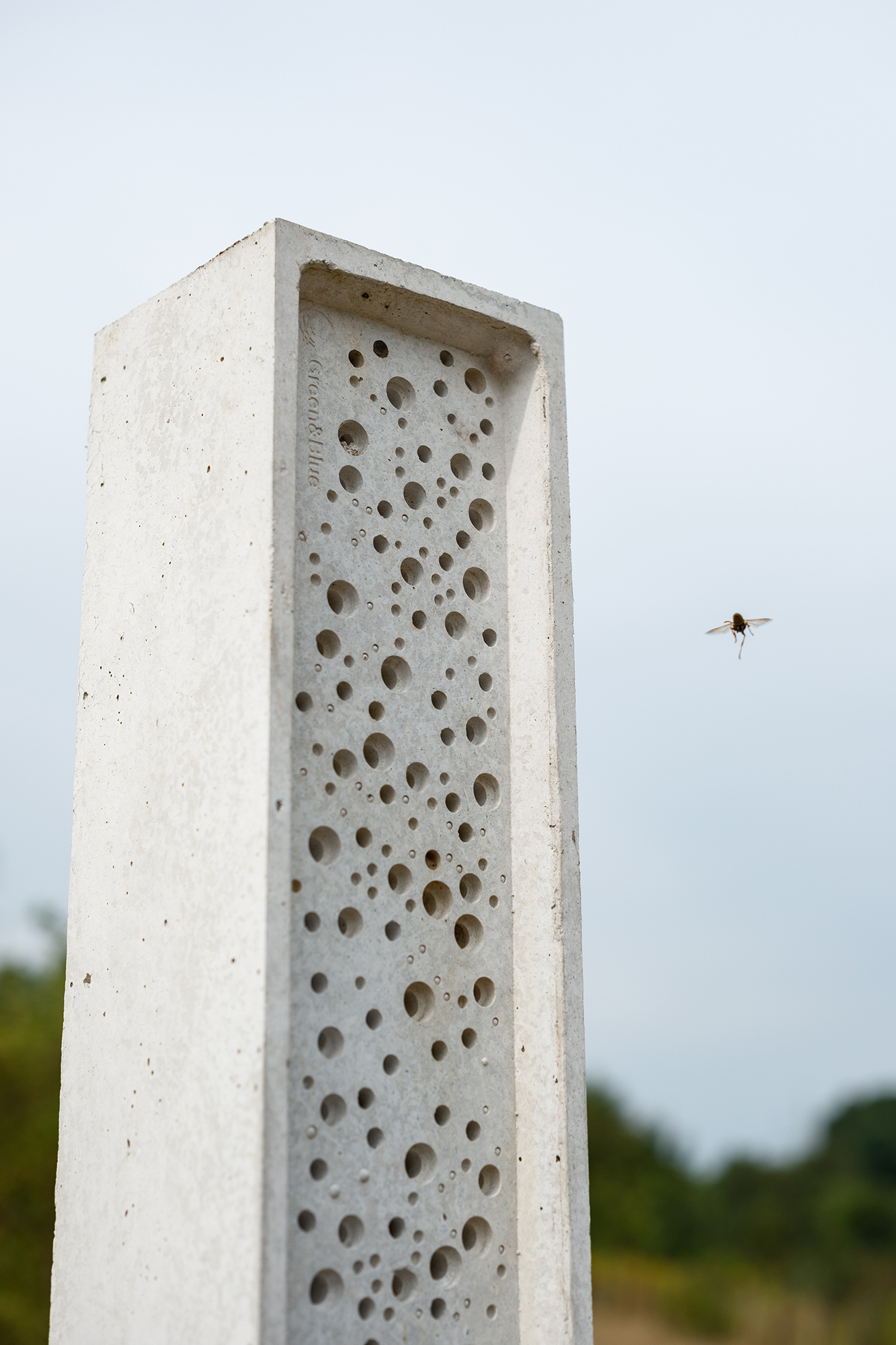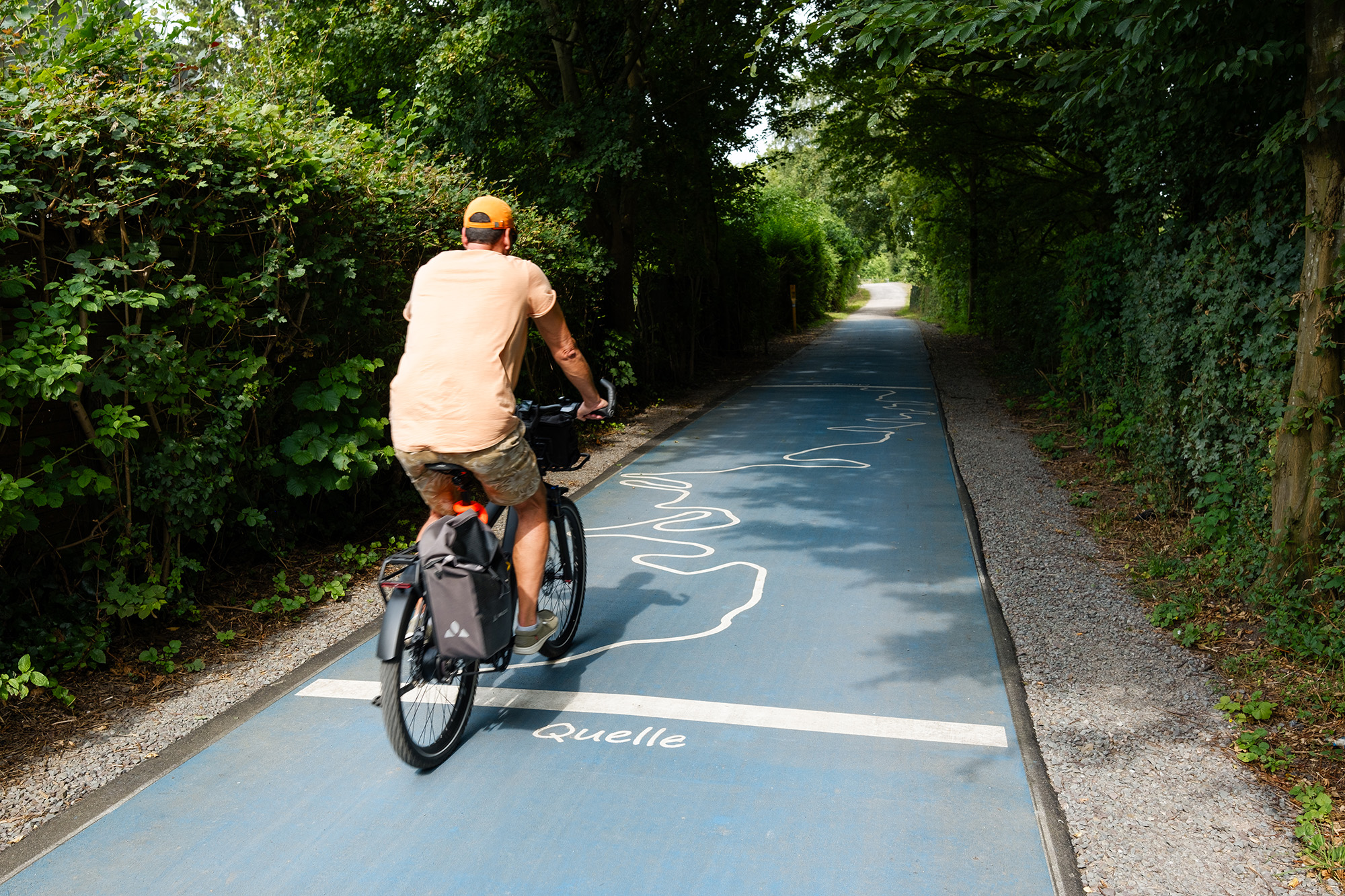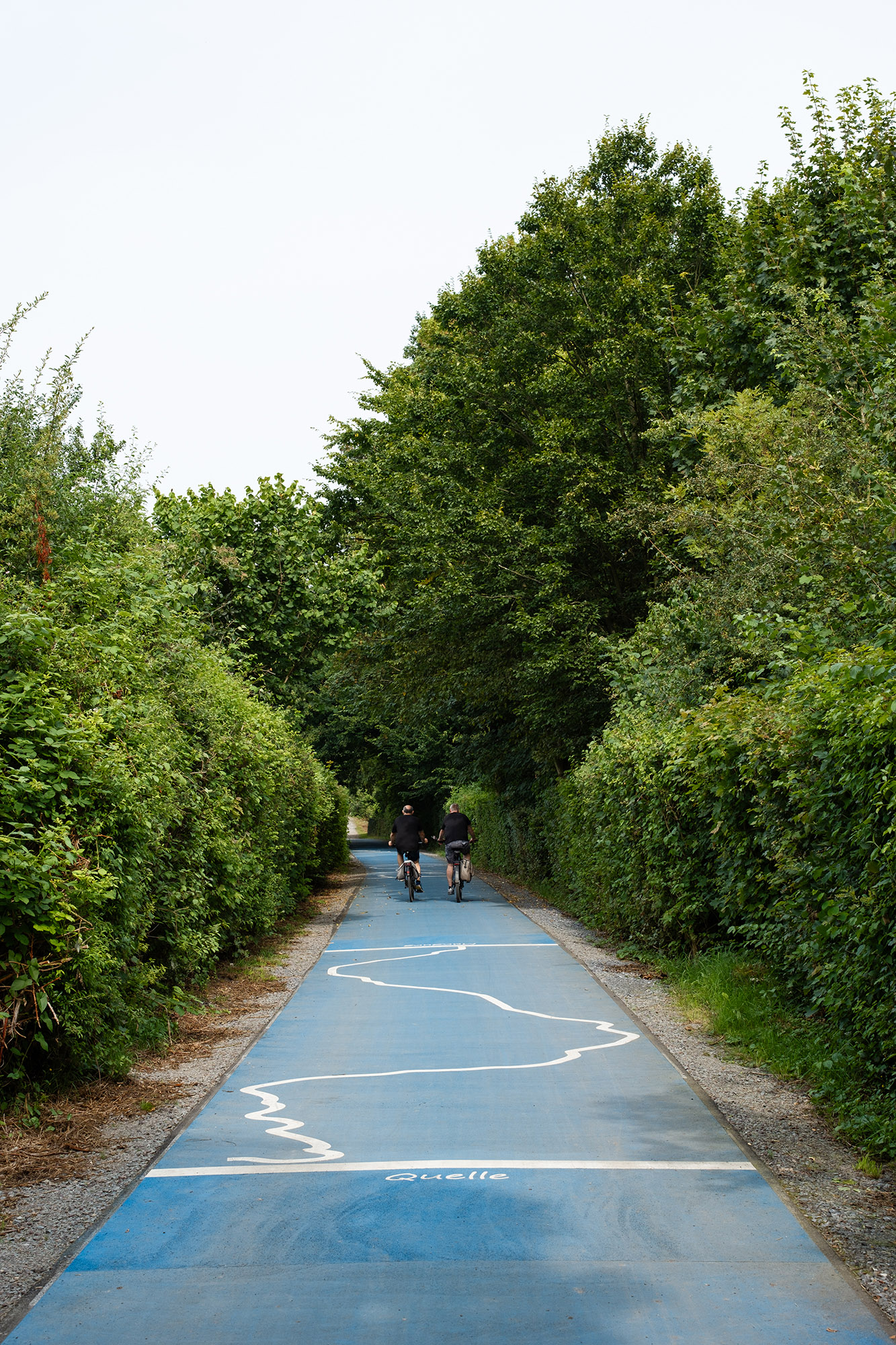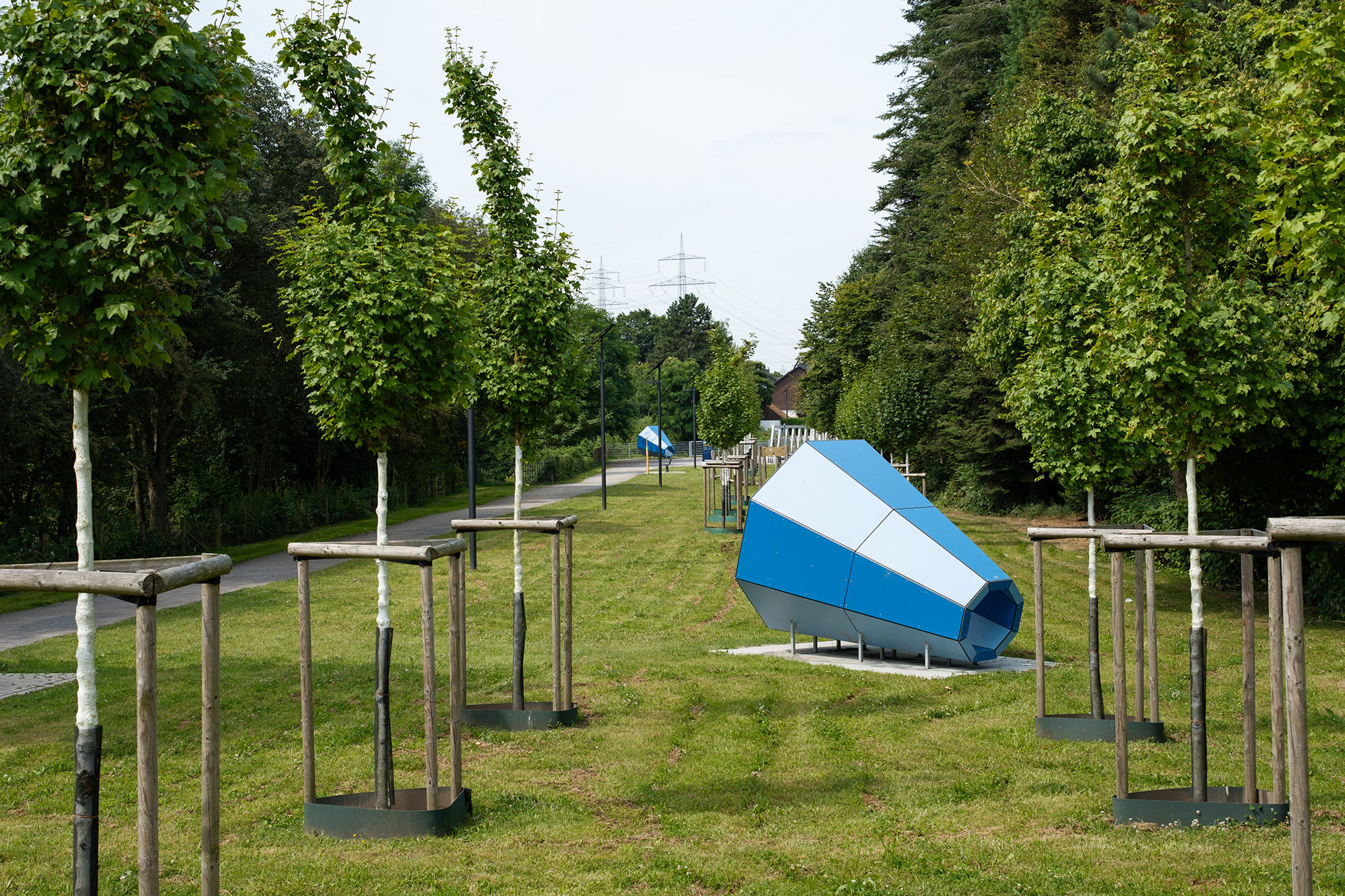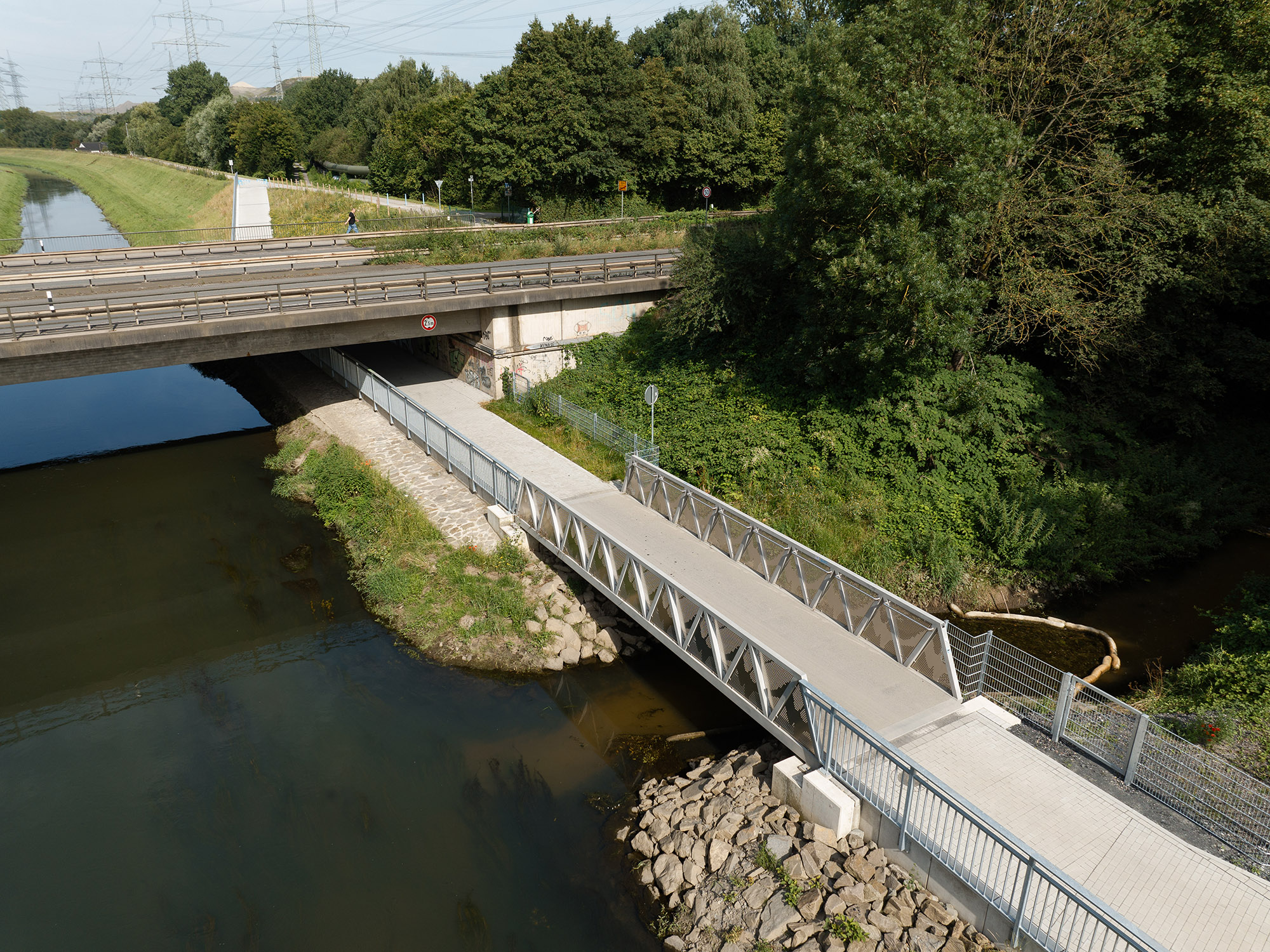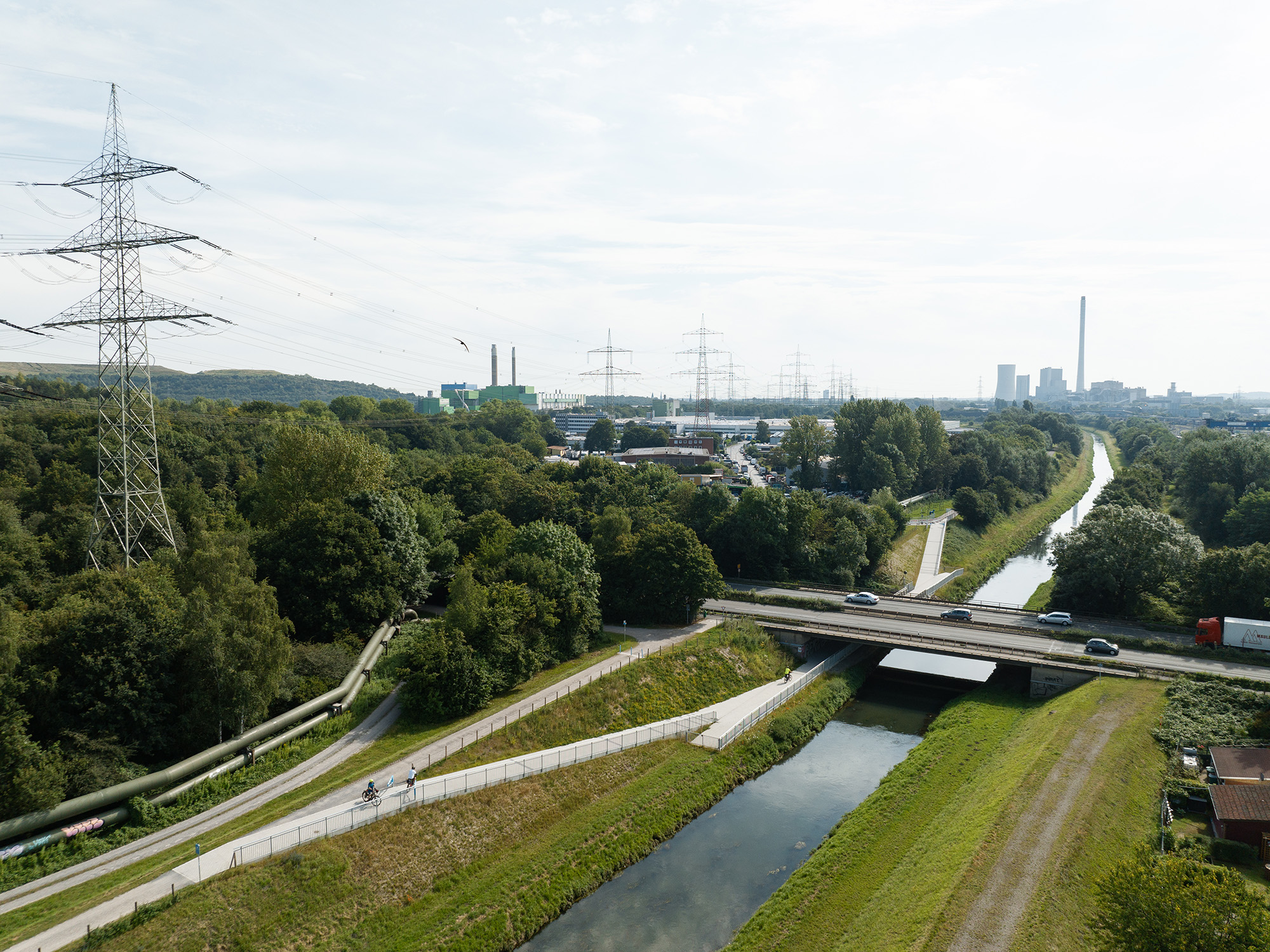Reconnecting with nature
Emscher-Promenade
Emscher-Promenade von Castrop-Rauxel bis Herten
The renaturation of the Emscher is progressing, and with it, the opportunities to transform its riverbanks into tangible spaces for people to experience are growing. In the eastern Ruhr area, DTP has succeeded to do this. They designed the Emscher-Promenade. This area along the water runs from Castrop-Rauxel via Recklinghausen and Herne to Herten. It not only connects cities but has also turned the Emscher into an attractive part of neighborhoods, cities, and the whole region.
Germany
Local
Castrop-Rauxel to Herten
Mainly rural
It refers to other types of transformations (soft investment)
Yes
2025-01-16
Yes
ERDF : European Regional Development Fund
No
No
As an individual
The renaturation of the Emscher, once known as "Germany's dirtiest river," has been completed after around 30 years. With it, the opportunities to transform its riverbanks into tangible spaces for people to experience are immense. In the eastern Ruhr area, DTP has succeeded to do this. They designed the Emscher-Promenade. This area along the water runs from Castrop-Rauxel via Recklinghausen and Herne to Herten. It not only connects cities but has also turned the Emscher into an attractive part of neighborhoods, cities, and the whole region.
The redesigned Emscher-Promenade is more than a cycling route and footpath along the water. While the old service road forms its backbone, it is the enhancement of the riverbanks and the design of unique places that make it an attractive destination, a highlight. It includes 25 designed areas, each of which addresses local topics, connects spaces and strengthens the link between the river and the local neighbourhoods. With new bridges and underpasses, the continuity along the river is also increasing. The connection to public transportation makes the Emscher-Promenade an important part of the region’s blue-green infrastructure.
The redesigned Emscher-Promenade is more than a cycling route and footpath along the water. While the old service road forms its backbone, it is the enhancement of the riverbanks and the design of unique places that make it an attractive destination, a highlight. It includes 25 designed areas, each of which addresses local topics, connects spaces and strengthens the link between the river and the local neighbourhoods. With new bridges and underpasses, the continuity along the river is also increasing. The connection to public transportation makes the Emscher-Promenade an important part of the region’s blue-green infrastructure.
Recovery of public space
Green connection
Cycle and footpath along the water
Backsides become front sides
Modular system
- Use of regional seed mixtures
- Planting of native trees
- Use of solar lights
- Species protection
- Planning with local people
- Planting of native trees
- Use of solar lights
- Species protection
- Planning with local people
Despite their individual designs and thematic focuses, all the redesigned spaces are connected. A kind of modular system contributes to this: like a blue thread, it runs along the promenade, shaping objects and street prints along the path. Bands of perennial flowering and insect-friendly plants also have a connecting character.
The Emscher-Promenade is a manly barrier-free cycle and pedestrian path. The promenade is freely accessible and can be used by anyone around the clock. People from different places and citys can come together in various places. The following places have been for example created for this purpose:
- Long table as meeting point for everybody
- Playgrounds with offers for all generations
- Blue classroom as contribution to education
- Bench seats for all generations
- Swivel chairs for resting and fun
- Long table as meeting point for everybody
- Playgrounds with offers for all generations
- Blue classroom as contribution to education
- Bench seats for all generations
- Swivel chairs for resting and fun
The citizens were informally involved in the planning process in advance. The planning results were presented at several meetings.
On-site meetings were held with the tenants of the adjacent areas, where the ecological relevance was examined. This dialogue was perceived as very valuable.
On-site meetings were held with the tenants of the adjacent areas, where the ecological relevance was examined. This dialogue was perceived as very valuable.
In this project, DTP acted as an intermediary between around 250 participants (e.g. the Arnsberg and Münster district governments, cities, municipalities, building authorities, the Emschergenossenschaft (various departments), specialist engineers, executing companies, funding bodies). In addition to the design, the main task was to keep an eye on the coordination of the individual areas and to implement the objectives. DTP fully took on this role as general planner. It was a major challenge to bring all participants with various complex interests together and to make the dialogue process goal-oriented.
At the national/European level, the general framework was established, specifications were made, permits were obtained and funding was applied for. At the regional/local level, the various construction companies were involved in the implementation process.
At the national/European level, the general framework was established, specifications were made, permits were obtained and funding was applied for. At the regional/local level, the various construction companies were involved in the implementation process.
- Fields of knowledge: water management, construction and soil exploration on industrial wastelands, ecology, bridge and civil engineering in collaboration with specialist engineers
- Based on the scope of the project (18 km, 25 locations), the focus could be set on specific content at the individual locations (prioritization)
- Profiling of the locations and enough space for ideas (flower meadows, bridges, etc.)
- Based on the scope of the project (18 km, 25 locations), the focus could be set on specific content at the individual locations (prioritization)
- Profiling of the locations and enough space for ideas (flower meadows, bridges, etc.)
The Emscher Promenade is characterized by the fact that there are several narrative strands. Visitors can not only take a break, but also find out about the place on information boards. In the blue classroom, the focus is on children being able to learn by the water what will happen to the river in the future.
The Emscher Promenade is a finished project, but it will always be possible to continue to develop it, as the dialogue process is constantly changing and will always remain expandable. The project and the process are constantly progressing over time and will change automatically, follow innovations and inevitably adapt accordingly.
In the future, the ecological improvement of the main course of the Emscher will continue to be implemented.
The Emscher Promenade is a finished project, but it will always be possible to continue to develop it, as the dialogue process is constantly changing and will always remain expandable. The project and the process are constantly progressing over time and will change automatically, follow innovations and inevitably adapt accordingly.
In the future, the ecological improvement of the main course of the Emscher will continue to be implemented.
The plans for the Emscher Promenade are based on the tried and tested technical regulations (e.g. TR 0035 (STA)) and the corporate design specifications of the EGLV.
In order to ensure the greatest possible recognition, a modular system of recurring elements is being developed.
The flowerbed along the path has an ecological and connecting character, particularly in the middle, scenic section.
These standard elements are supplemented by special elements tailored to individual locations. The aim is to reconnect the clean river as part of the urban space and to open it up to people as an attractive, everyday usable open space.
In order to ensure the greatest possible recognition, a modular system of recurring elements is being developed.
The flowerbed along the path has an ecological and connecting character, particularly in the middle, scenic section.
These standard elements are supplemented by special elements tailored to individual locations. The aim is to reconnect the clean river as part of the urban space and to open it up to people as an attractive, everyday usable open space.
The tree groves bring peace to the heterogeneous spatial sequence along the promenade and shield the places from the urban space with traffic etc.
A largely continuous, insect-friendly band of flowers accompanies the Emscher Promenade in its middle landscape section (between Bochumer Straße and Wasserkreuz) and connects the individual places. In the more urban sections in the west and east, the band of flowers can be found in the area of the redesigned places.
A largely continuous, insect-friendly band of flowers accompanies the Emscher Promenade in its middle landscape section (between Bochumer Straße and Wasserkreuz) and connects the individual places. In the more urban sections in the west and east, the band of flowers can be found in the area of the redesigned places.
- Planting new native trees, shrubs, plants and flowering meadows
- Renaturation of the Emscher
- Former industrial roads become public spaces, dealing with waste
- Intervention in nature reserves as minimal as possible - bringing people and the environment together and developing a feeling for each other
- Renaturation of the Emscher
- Former industrial roads become public spaces, dealing with waste
- Intervention in nature reserves as minimal as possible - bringing people and the environment together and developing a feeling for each other
Children who live in neighborhoods should actively use the Emscher area in the future and use the areas along the river as a play and adventure area. The natural area should be made accessible to cyclists and pedestrians and offer added value. The Emscher Promenade should be used as an attractive excursion destination.
By linking the Emscher Promenade with the city limits, new qualities are created for residents and visitors who travel along the Emscher Promenade.
By linking the Emscher Promenade with the city limits, new qualities are created for residents and visitors who travel along the Emscher Promenade.

